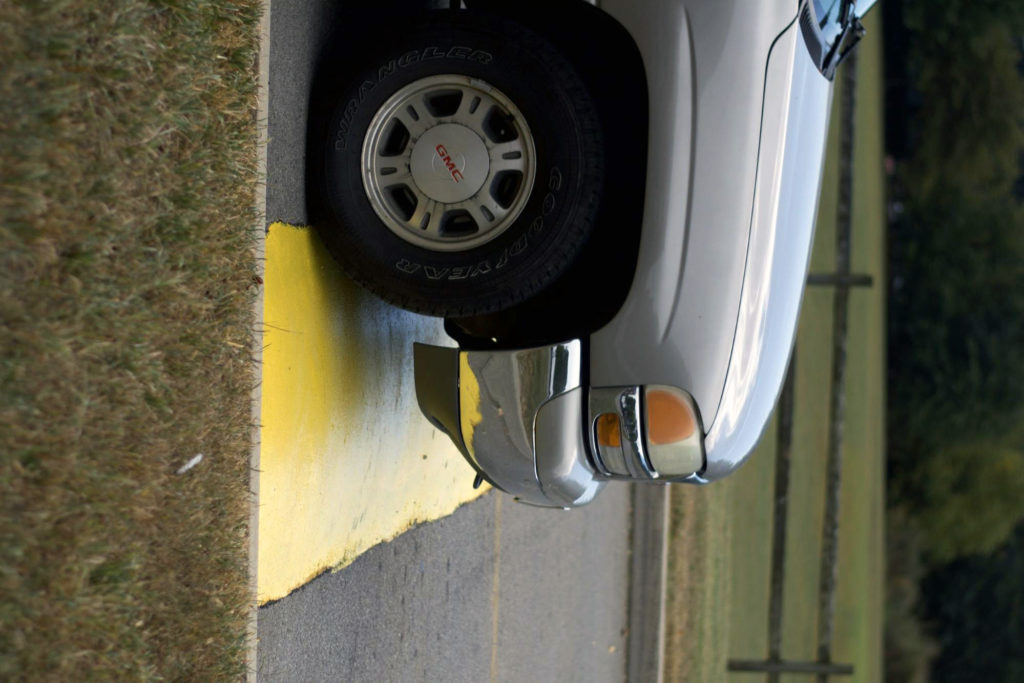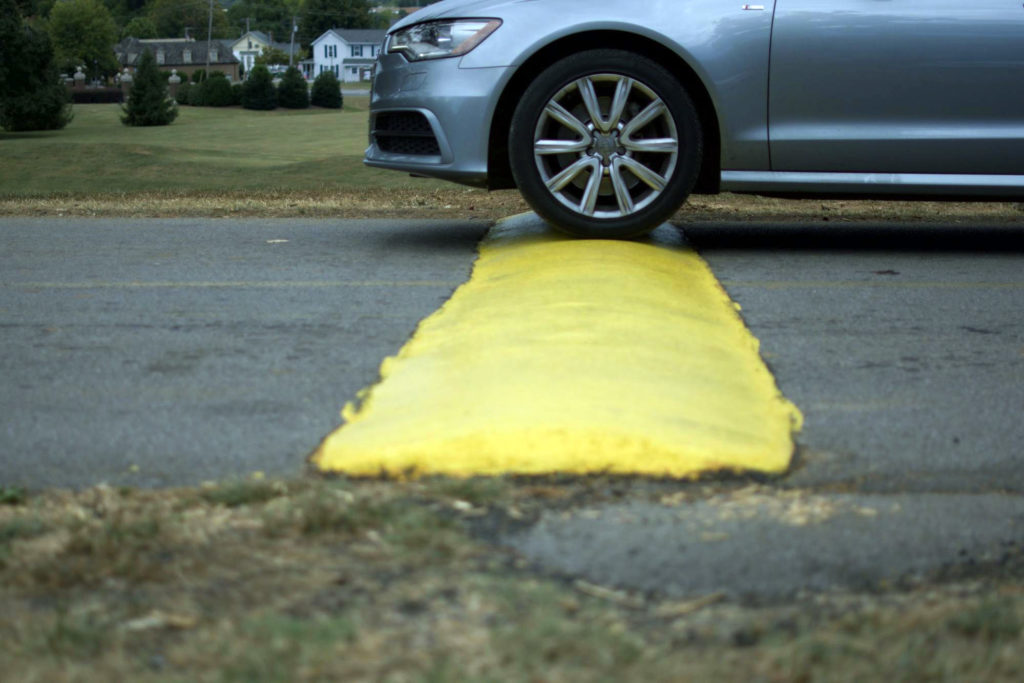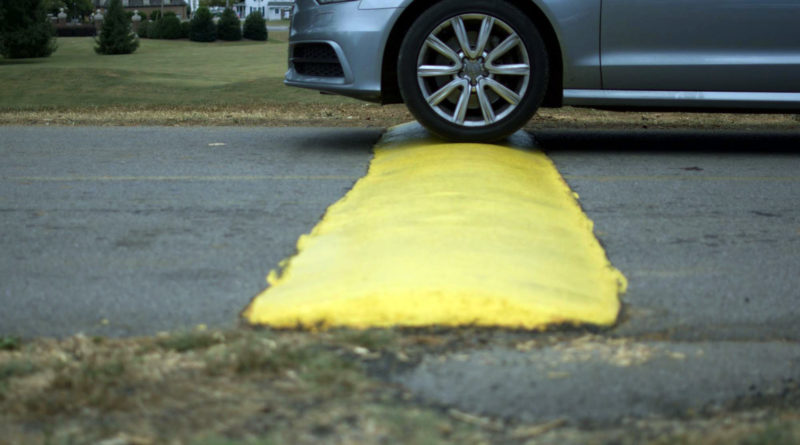Maryville College’s newest addition creates “bumpy” dilemma
Day and night, vehicles were often seen flying around the campus, endangering others. Seeing the speeding cars as a danger to others, the school made it their utmost priority to resolve this issue.
“Change is hard, but folks speeding on campus was getting out of hand,” said Reggie Dailey, director of the Physical Plant. A solution was provided this last summer when

Photo by: Jay Kirchner
On Aug. 29, Dean Melanie Tucker was informed at a Student Government Association meeting that the speed bumps were proving to cause as much conflict as they were a solution. Students were mentioning that the speed bumps were too high. Also, it was constantly questioned on whether they were a regulated height because of cars “roughly” riding over them.
“The speed bumps are way too high. It feels as if it is scraping the bottom of my car, and I don’t want to pay for repairs if it is,” said senior Hayley Jeffers.
The speed bumps do follow the standard regulations of the National Highway Traffic Safety Administration with height, width, and spacing.
The reason that the speed bumps feel higher than the average is

Photo by: Jay Kirchner
Although the speed bumps seemed to pose a problem for some because of the height, as an indirect effect, dirt trails were made. A temporary solution was created by putting rocks on the sides of the bumps.
“Once cars start to ride over the speed bumps, the asphalt will begin to compact into place. They will no longer be as rough, so by not riding over the speed bumps they will continue to have their current height,” Dailey said.
Although there were other alternatives to creating a safer environment, the speed bumps were the most efficient solution for the campus. Insertion of the bumps was strategically thought out and not taken lightly. $9,000 was the cost of the speed bumps, and that is not a lot of money for the wellbeing of others.

Photo by: Jay Kirchner
The speed bumps were also talked about for months. The conversations included topics like the costs of the bumps and signs to inform the community of them. Speaking to the city engineers about regulations and restrictions, fire marshals about response times in case of emergency, and other substitutions, like hiring more security were also taken into consideration. All in all, the speed bumps seemed like the correct solution for the school.

